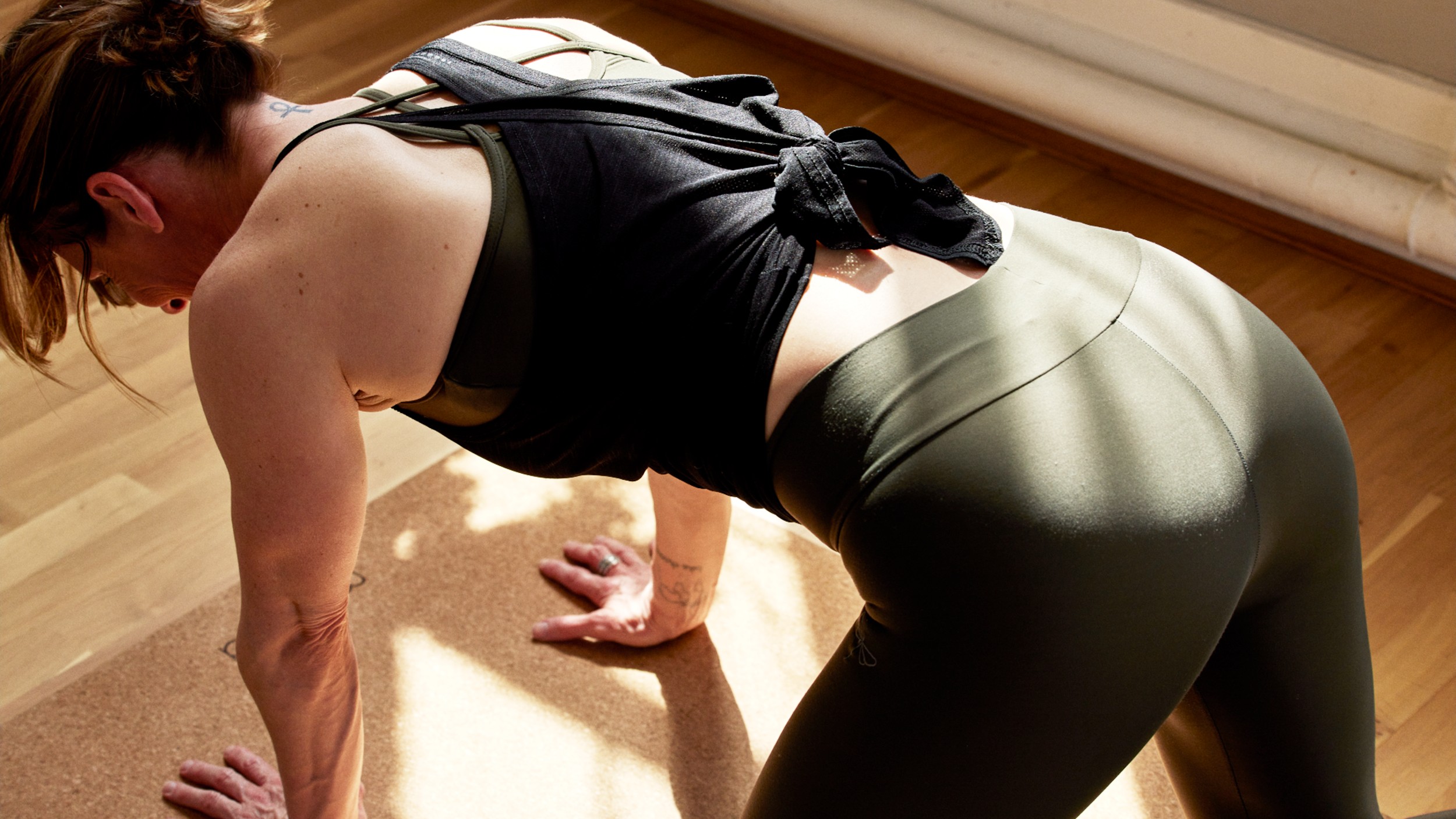
The bear squat engages your entire body, builds core strength and improves ankle and hip mobility — all while your hands and feet remain on solid ground.
There are several variations of the quad-torching exercise, but this one is the hardest, in my opinion. So for some reason, I chose to do it 70 times every day for one week. Starting from a tabletop position, you can simply lift your knees and send your hips back towards your heels to do the bear squat. It might not seem like much, but as the reps build, the tension in your muscles skyrockets.
This bodyweight exercise targets the upper and lower body, although you could add a weighted vest if you want more intensity. I rolled out one of the best yoga mats and got to work squatting through the week. Here’s what happened.
How to do a bear squat
One variation is to start from a tabletop stance and send your hips upward into a position similar to a downward dog, which will activate more of the hamstring muscles (see below). But the variation I use with clients involves sending the hips backward instead, maintaining a flat back and low position, with knees hovering just an inch above the ground.

Not only does your core activate, but you’ll also feel the move in your shoulders, chest, arms, hips, quads, hamstrings and calf muscles. Bear squats are a full-body exercise, but that doesn’t pull focus from your quads, which I guarantee will fire up from a relatively low rep count.
Step-by-step:
- Start in a tabletop position with toes tucked under and your core engaged
- Maintain a flat back, then lift your knees roughly an inch off the ground
- Push your hips back as far as possible toward your heels while keeping your knees close to the ground
- Pause, then return to your starting position.
If you want to test a static version, our fitness editor did bear planks every day for a week to test her core strength.
I did bear squats every day for a week — here’s what happened to my quads
Here’s how it went.
Day 1
On day one, I decided to tackle these reps in one go and determine the lay of the land. As it turns out, this was a horrible idea, and my quads were on fire. However, I enjoy the stretch I get from bear squats, and in moderation, it’s a brilliant way to warm up my wrists, ankles, knees and hips.
Although you’re not vertically loading your body, you can still work your lower body muscles hard through the sagittal plane — forward and backward motion. The exercise is also multi-joint and works various muscle groups, which is called a compound exercise, so you get more bang for your buck too.
Days 2 and 3
I recommend practicing bear squats f you have limited mobility in your hips and ankles. It teaches the movement pattern of squatting while allowing you to work on your range of motion without vertical load; this could help you achieve a deeper squat over time with less stress on your joints.
For the next few days, I added a mini loop band similar to the ones from our best resistance bands buying guide. Doing so helped me engage my lower body as I pushed my knees outward against the resistance. Some people prefer to place a weight on their mid to upper back to add challenge, but this worked just fine for me.
Days 4 and 5
Every time we try out fitness challenges at Tom’s Guide, I get restless by days four and five — and this was no exception. For the next 140 reps, I tried lifting one leg or arm every 10 reps and alternating between sides. When I lifted my left arm, the emphasis moved to my left arm and shoulder and right leg, and when I repeated this on my right arm, it switched to my right arm and left quad.
My body had to work harder to recruit muscles to work together, stabilize my body and still produce movement without my hip turning out as I moved. This reminded me of the four sling systems that form the musculoskeletal system and how they are crucial.
Slings comprise various muscle groups that work together to produce movement and force and provide stability. One example is the posterior oblique sling, running from the latissimus dorsi to the opposite gluteus maximus. When our slings are in working order, the body is strong, balanced and moves efficiently. But if any part of the slings is weak, the body becomes dysfunctional.
Sling systems also account for natural movement. That’s why many strength and conditioning coaches, physiotherapists and other professionals look at the muscles in the body as a whole system — you might have heard that lower back pain often originates from the hamstrings or hips, for example.
Full-body functional training in various planes of motion helps avoid injury and overtraining, build stability and improve force and speed, rather than working in isolation. Bear squats are an example of initiating upper body movement, including your trunk, and creating force through the lower body.
Days 6 and 7
Throughout the week, I focused on compound contraction — contracting as many muscles as possible during the exercise. I adopted time under tension and slowed down each phase to maximize the effort through my muscles. Keeping my back flat and knees just above the floor, I could focus on core stability and checking I felt this where I wanted to. By day seven, my quads and hip flexor muscles were blitzed, and I was ready for a break.
If you feel this mostly in your hips, see how we recover from fitness challenges with some mobility routines below.







